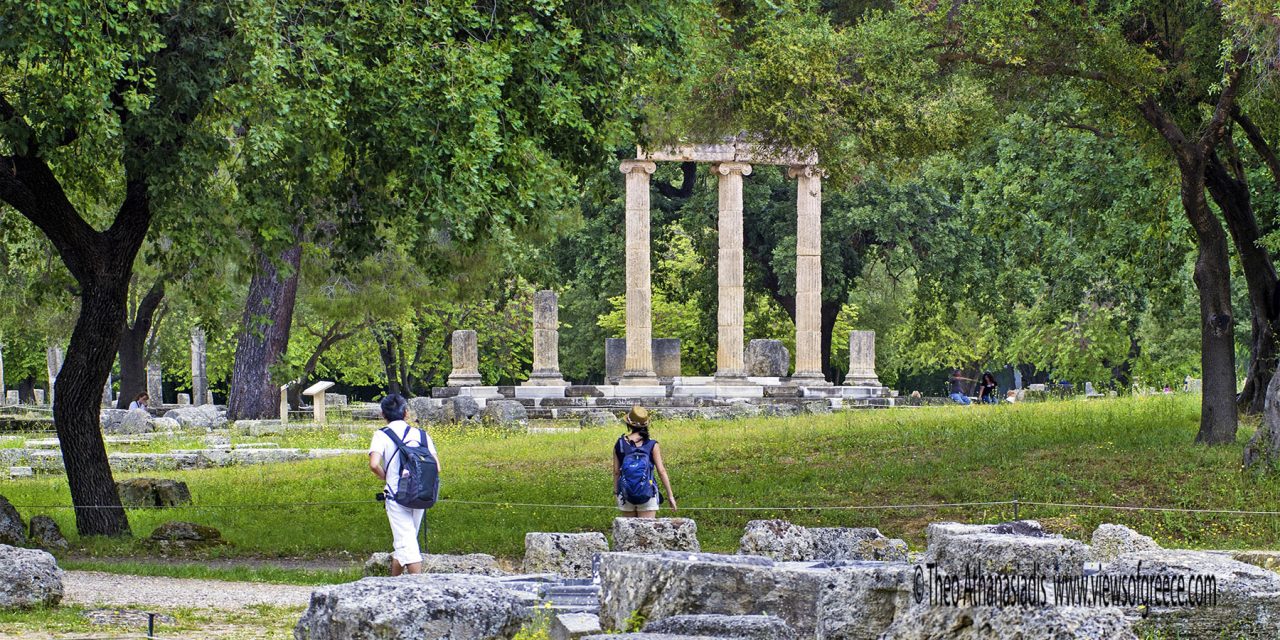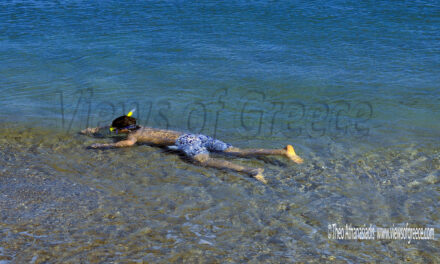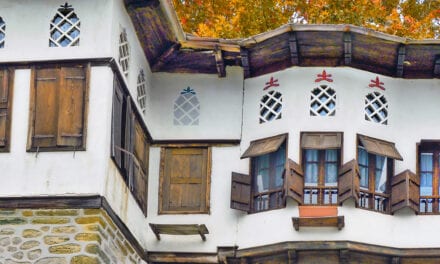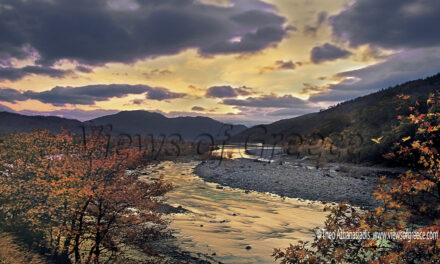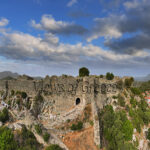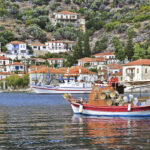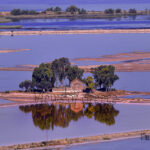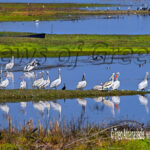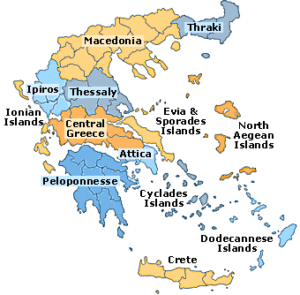From ancient times to the present day, the landscape of Olympia has been a source of inspiration for poets and travellers alike. The famous archaeological site, Mount Kronos, the cool presence of the Alfeios River and the peaceful shores of Lake Kaiafa, all serve to create a timeless landscape, here in this sacred land of Ilida, nowadays known as Elis
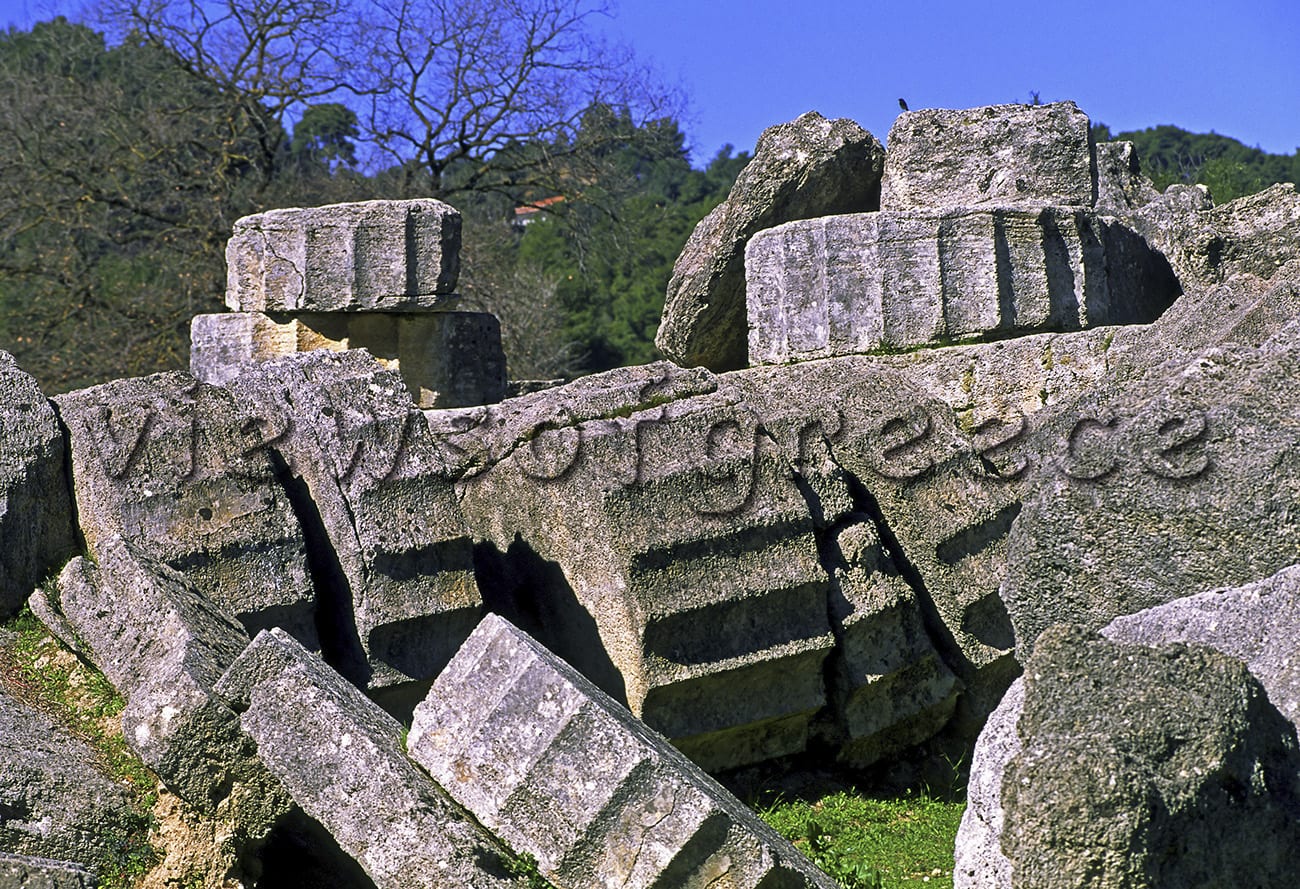
Copyright photo: Theo Athanasiadis / Views Of Greece
First impressions
Arriving in the small town of Ancient Olympia, the first impressions are those of a typical resort subject to the dictates of archaeological tourism. There are many hotels, restaurants and shops. Right next to the village lies the extensive archaeological site. Unfortunately, this “holy land”, which was so lauded through the centuries, suffered destruction in the summer of 2007 when fire broke out in the surrounding forests, altering the ancient landscape significantly. Nevertheless, it still emanates that powerful sense of timelessness…
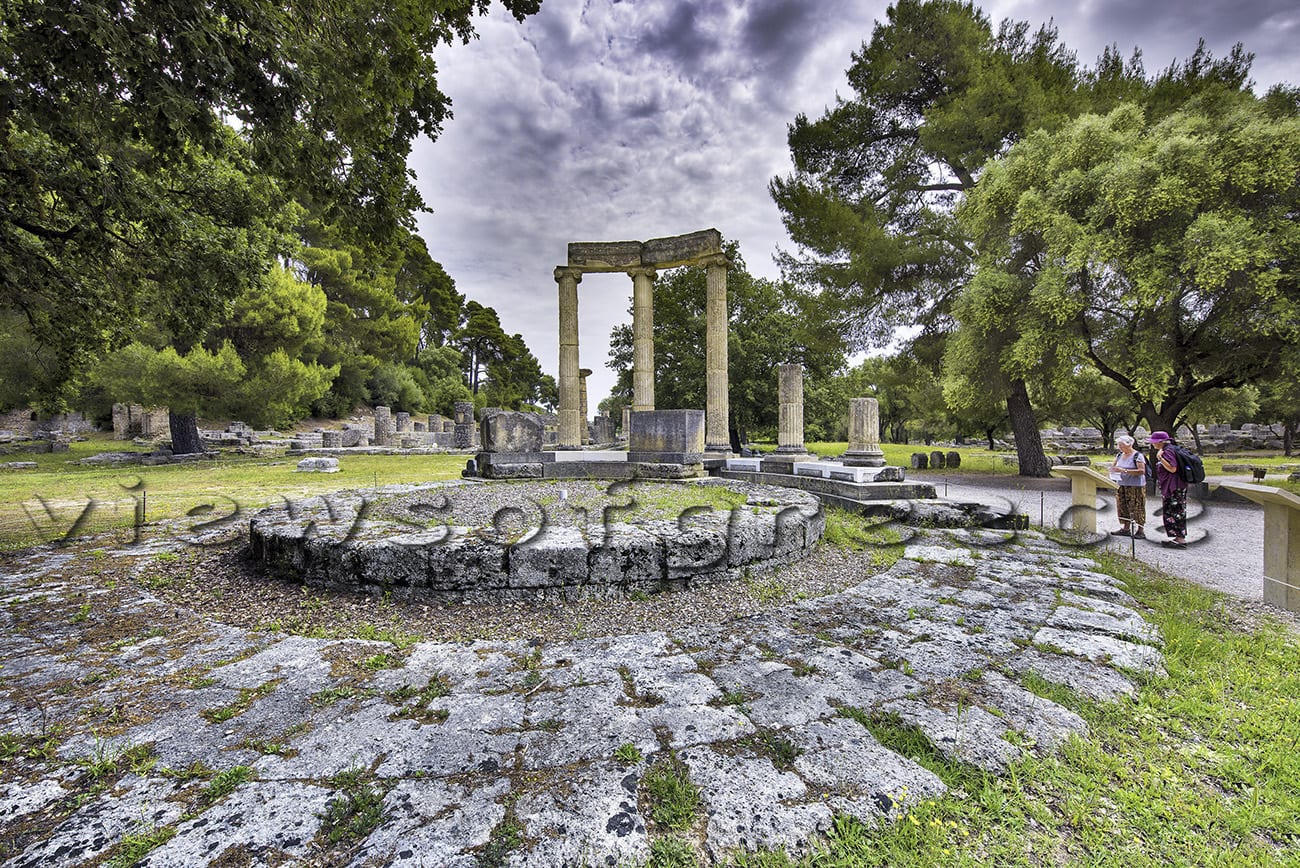
Copyright photo: Theo Athanasiadis / Views Of Greece
History at a glance
Zeus, Apollo, Hermes and Hercules are most popularly believed to be the mythical founders of the Ancient Olympic Games. The first official games recorded in history were held in 776 by the King of Elis, Iphitos. This was when the first “Sacred Truce” was signed, that is, an agreement between the warring Greek city-states to cease hostilities for the duration of the games. Under Roman rule the Olympic Games gradually lost their prestige, and over the course of time the area of Olympia saw great destruction. It is known to have suffered attacks from the Romans under Silas (85 BC), and later from the Germanic Heruli in 276 AD. The last Ancient Olympic Games were held here in 393 AD, and in 426, when the Emperor Theodosius ordered the destruction of all pagan temples, the sacred site suffered incalculable damage.
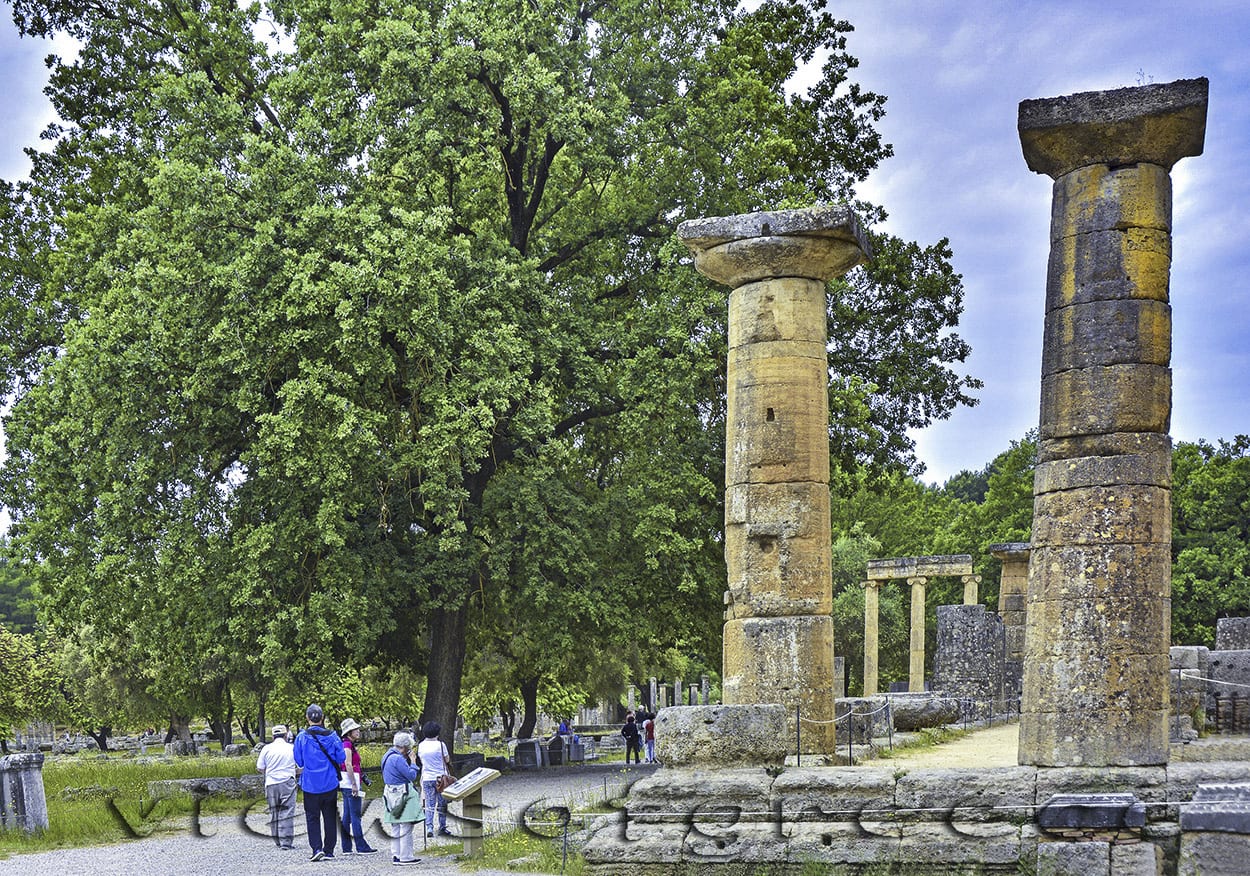
Copyright photo: Theo Athanasiadis / Views Of Greece
Ancient Olympia
On the foothills of Mount Kronos, where the Kladeos tributary meets the Alfeios River, the natural landscape unfolds to reveal the archaeological site of Ancient Olympia, open to visitors. If you wish to explore the site in detail, the handy guidebook sold at the entrance is necessary. The Heraion, the workshop of Phidias the sculptor, the ‘Vouleftirio’ (‘Parliament’) (meeting place for the council of citizens), the Stadium, the Palaestra, the Baths, the Temple of Zeus and many other semi-ruined buildings, relics of a glorious past, will lead you on an endless meandering journey through time and history. Olympia is also known for the great ivory and golden statue of Zeus, by Pheidias the ancient sculptor, listed one of the Seven Wonders of the Ancient World. Don’t miss the archaeological museum, which exhibits the significant findings from repeated archaeological excavations of the site (+3026240-22517)
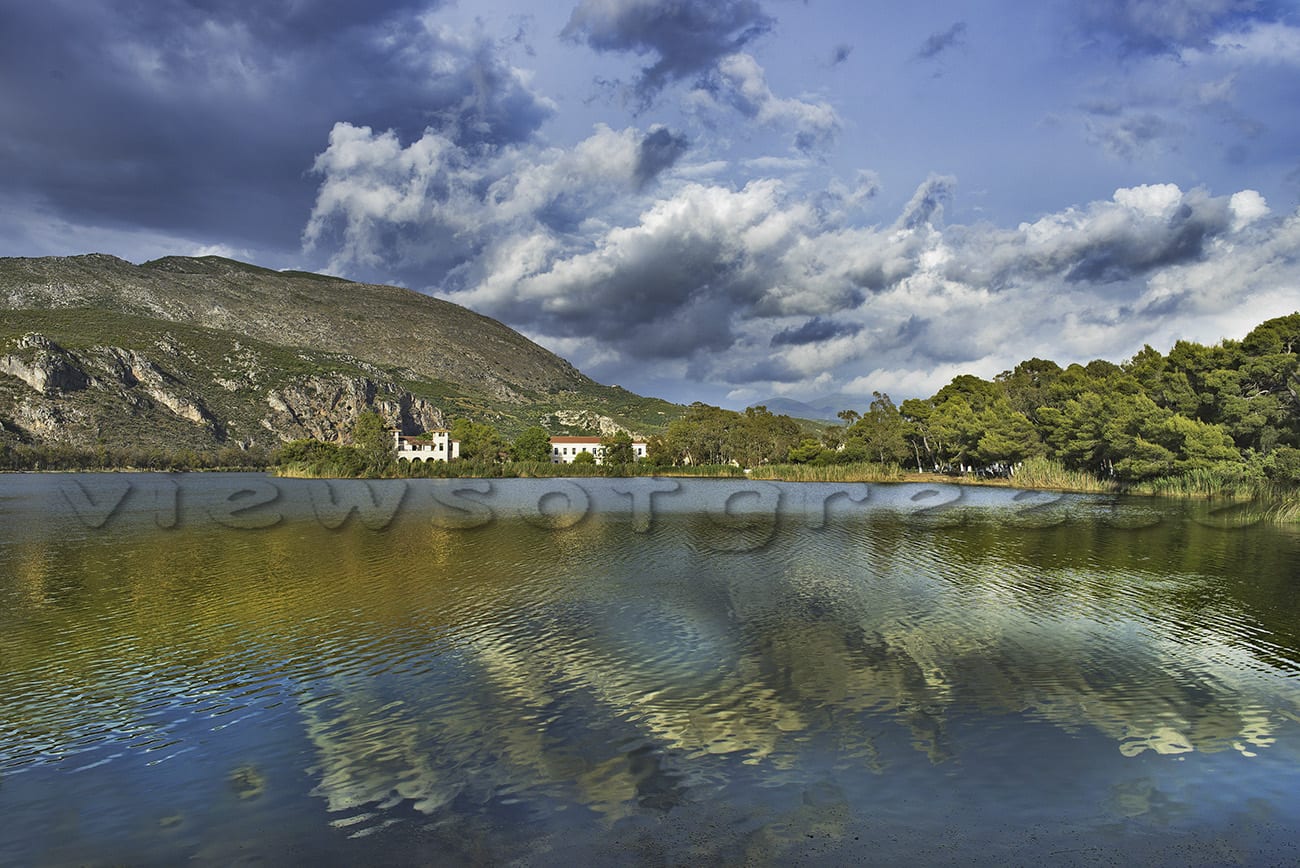
Copyright photo: Theo Athanasiadis / Views Of Greece
Lake Kaiafas
The arterial road that connects Ilida with Messinia crosses the narrow strip of land between the azure blue Ionian Sea on one side and the waters of Lake Kaiafa on the leeward side (18 km. south of Ancient Olympia). An asphalt road follows the perimeter of the small lake, whilst dirt roads and footpaths lead down to its shores. Legend has it that the centaur Nessos washed his wounds here when he was struck by the poisoned arrows of Hercules. This idea of poison may well be associated with the ancient storyteller’s attempt to explain the strong smell of the sulfurous hot springs which bubble up from the ground here.
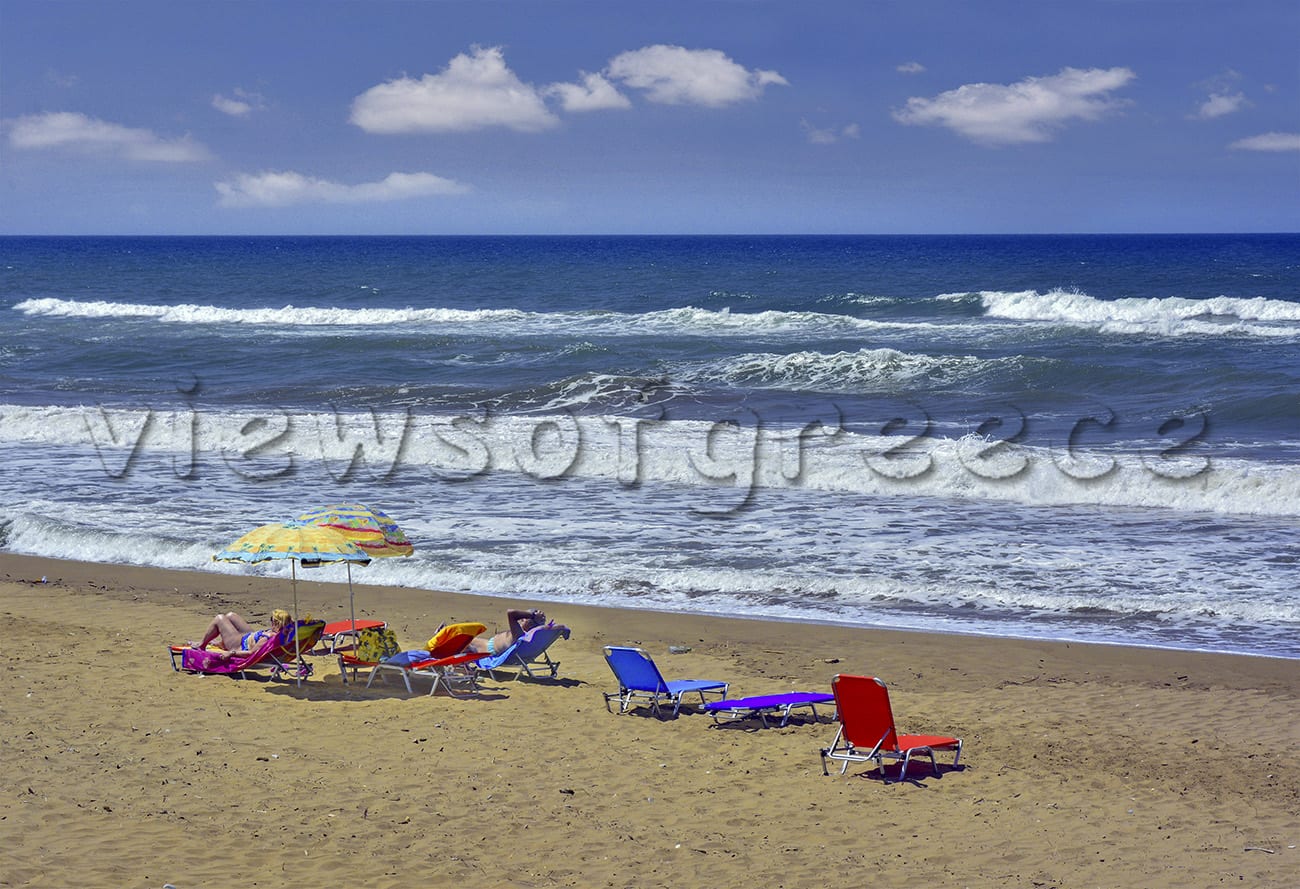
Copyright photo: Theo Athanasiadis / Views Of Greece
Beaches
From the mouth of the River Alfeios to the port of Kiparissia (50 km south) lies one of the longest beaches in Greece, with sand dunes, and pine trees which spread their roots down to the waves. The most beautiful spots for swimming are the beaches of Zacharo, Kakovatos Neochorio in front of Lake Kaiafa.
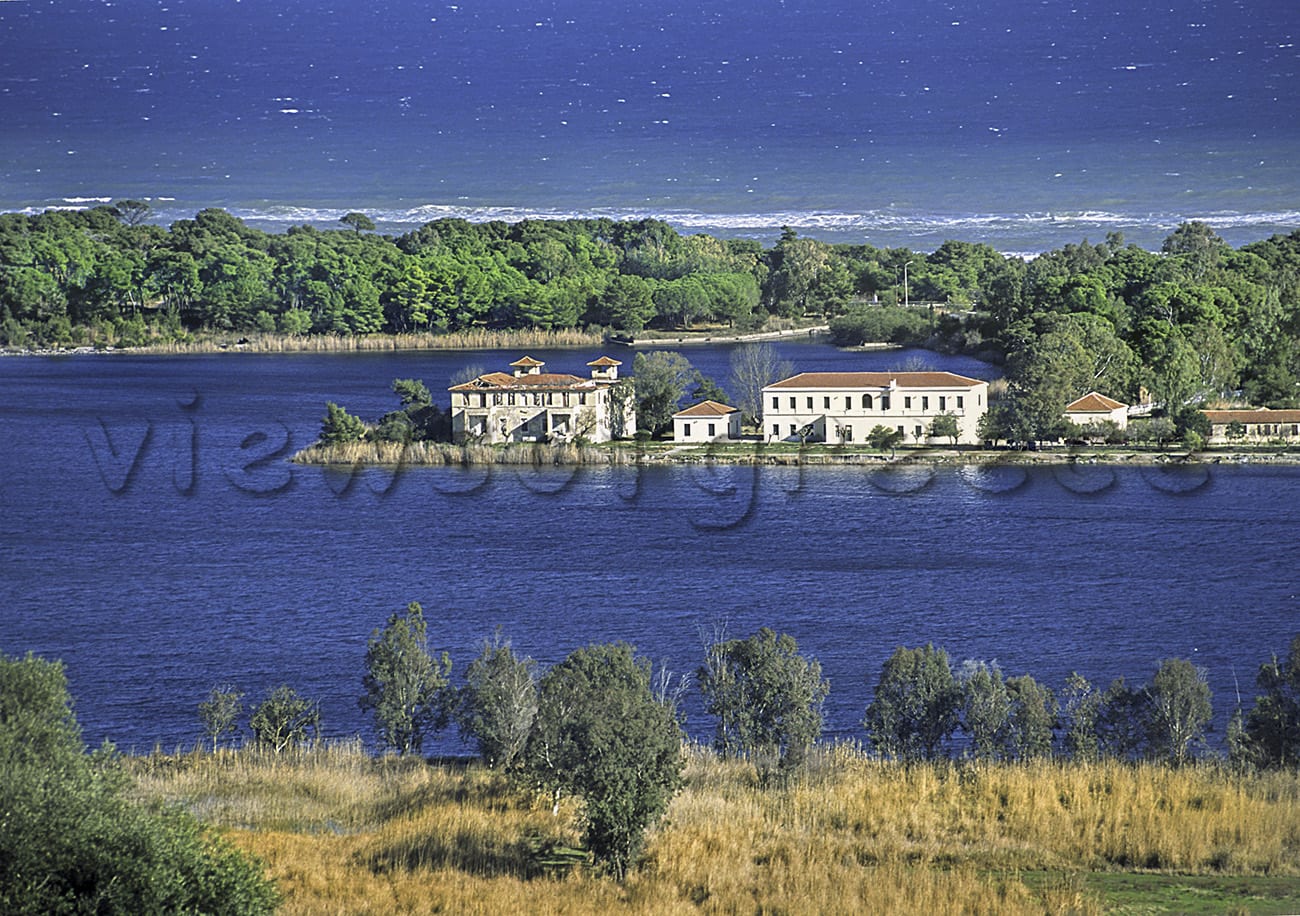
Copyright photo: Theo Athanasiadis / Views Of Greece
Thermal baths
The Kaiafa hot springs are rich in sulfides and are indicated for the treatment of rheumatism, skin diseases, asthma, gallstones and other disorders. The temperature remains constantly throughout the Spa’s opening season -from May to October-, at between 20o – 30o C (+3026250 31719).
Copyrigth photo & Text: Theo Athanasiadis /VIEWS OF GREECE
“VIEWS OF GREECE” travel photojurnalism: Discover Greece with the experts
According to the law:2121/1993 and the international treaty signed in Bern (which has been ratified with the law:100/1975) reproduction of this work is forbidden in any way, partially or on the whole, including texts or photographs alike without the written consent of the creator. Intellectual property is aquired without formalities and without the need for provision prohibiting its disputation.

